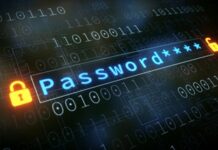
Access control and video are two prime examples of how today’s technological advances are effectively providing significant opportunities to add value to your customer. They deliver traditional security, but also increased visibility, insight and risk mitigation for a customer’s facilities, assets and employees. Let’s look at their individual system attributes, and how their potential impact increases when combined.
In its simplest form, access control grants or denies an individual the ability to enter specific areas of a building. This could be access to the building itself, specific floors, access to restricted areas or rooms, or entry to certain components such as cabinets, closets or lockers. When proposing access control solutions, understanding what level of security is required, how many users will be operating the system and the strategy for long-term facilities expansion will establish the beginning of a customized, comprehensive solution to keep up with the rapidly progressing security technology.
These access technologies can reduce overall costs and provide more security or functionality:
• Multifactor Authentication — requires the user to present two forms of identification to gain access, such as an ID card, personal identification number (PIN), biometrics (fingerprint, iris or retina) or voice and facial recognition. This would not be required for every controlled door, however offering a system that facilitates multifactor authentication provides the customer the ability to identify specific doors as higher security access with multi-factor credentialing and other doors single-credential access typically with a card.
• Mobile Credentials — are quickly becoming more commonplace within the access control space. This allows the customer to reduce or eliminate the number of access cards as well as increase user experience. Extra measures can be added by requiring passcodes to the phone or PIN code entry via a reader. The long-term savings of reduced card management and eliminating replacement of ID cards provides a strong ROI for many customer applications.
• Data Analytics — allowing and preventing access is important, so providing insight and historical evidence of who accessed or attempted access to a door can be invaluable. Data can be prioritized and ranked using a rules engine to create alerts for customers to show events or trends that should be investigated immediately.
Video surveillance is witnessing significant technology advances, typically at a much more rapid pace than other security technologies. A camera delivers more than just images now. Recommending the right solution enables customers to reduce their overall costs by choosing a platform that meet the needs of multiple applications and use cases in an ever-changing environment, instead of multiple systems that provide a single-purpose solution.
• Video Analytics — providing customers with the options to install cameras with traditional security event based video analytics for indoor and outdoor environments, as well as transcending beyond security into marketing, customer service, operations and other valuable metadata creation.
• System Assurance — a camera is ineffective if it doesn’t perform as intended by failing to deliver a consistent video stream to allow the recording of an event or activity taking place. Pulling video to review an event from two weeks ago to discover the camera was on, but the system did not record, renders the entire video solution useless. Offering a system assurance package that notifies the customer near real-time that a camera is not streaming, or a recorder is not recording, prevents future business losses, saves time and provides peace of mind that video evidence will be there when needed.
• Cyber Hygiene — the increased use of IoT devices and IP cameras increases the vulnerability to a customer’s network. It is important to provide a cyber hygiene program to reduce the risk of security breaches and vulnerabilities to their network. Ensuring firmware is up-to-date, verifying secure passwords are being used and providing a physical inventory of items on the network are all necessary when selecting a video platform.
Video and access control are solid security solutions on their own, but are much more effective when they are integrated as a total solution. Being able to see in real-time who is accessing or attempting to access specific areas; video evidence of who is entering where and when; and leveraging the power of video analytics to not only identify events but to recognize if the credential and the individual are one in the same are all pertinent types of information for customers.
Understanding the customer’s current needs and pain points, while anticipating their future vulnerabilities is critical to providing a solution that saves the customer money over the long run. Being able to grow into a system with company expansion and acquisition is important.
It is cost effective to invest more upfront to prevent significant costs and reduced benefits long term. Providing options for advanced solutions and presenting the costs and benefits is a winning formula to help your customer make the best decisions for their business.











